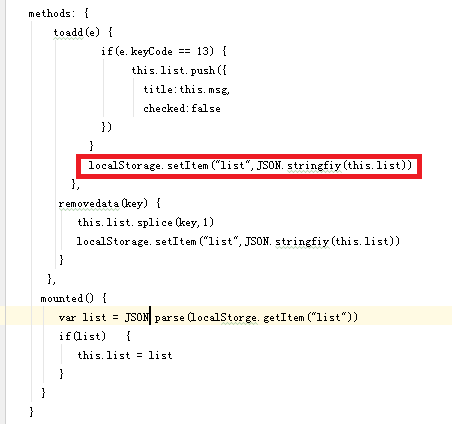I\'m programming a HTML5 < canvas > project that involves zooming in and out of images using the scroll wheel.
I want to zoom towards the cursor like google maps does but I\'m completely lost on how to calculate the movements.
What I have: image x and y (top-left corner); image width and height; cursor x and y relative to the center of the canvas.
In short, you want to translate() the canvas context by your offset, scale() it to zoom in or out, and then translate() back by the opposite of the mouse offset. Note that you need to transform the cursor position from screen space into the transformed canvas context.
ctx.translate(pt.x,pt.y);
ctx.scale(factor,factor);
ctx.translate(-pt.x,-pt.y);
Demo: http://phrogz.net/tmp/canvas_zoom_to_cursor.html
I\'ve put up a full working example on my website for you to examine, supporting dragging, click to zoom in, shift-click to out, or scroll wheel up/down.
The only (current) issue is that Safari zooms too fast compared to Chrome or Firefox.
I hope, these JS libraries will help you:
(HTML5, JS)
- Loupe
http://www.netzgesta.de/loupe/
- CanvasZoom
https://github.com/akademy/CanvasZoom
- Scroller
https://github.com/zynga/scroller
As for me, I\'m using loupe. It\'s awesome!
For you the best case - scroller.
I recently needed to archive same results as Phrogz had already done but instead of using context.scale(), I calculated each object size based on ratio.
This is what I came up with. Logic behind it is very simple. Before scaling, I calculate point distance from edge in percentages and later adjust viewport to correct place.
It took me quite a while to come up with it, hope it saves someones time.
$(function () {
var canvas = $(\'canvas.main\').get(0)
var canvasContext = canvas.getContext(\'2d\')
var ratio = 1
var vpx = 0
var vpy = 0
var vpw = window.innerWidth
var vph = window.innerHeight
var orig_width = 4000
var orig_height = 4000
var width = 4000
var height = 4000
$(window).on(\'resize\', function () {
$(canvas).prop({
width: window.innerWidth,
height: window.innerHeight,
})
}).trigger(\'resize\')
$(canvas).on(\'wheel\', function (ev) {
ev.preventDefault() // for stackoverflow
var step
if (ev.originalEvent.wheelDelta) {
step = (ev.originalEvent.wheelDelta > 0) ? 0.05 : -0.05
}
if (ev.originalEvent.deltaY) {
step = (ev.originalEvent.deltaY > 0) ? 0.05 : -0.05
}
if (!step) return false // yea..
var new_ratio = ratio + step
var min_ratio = Math.max(vpw / orig_width, vph / orig_height)
var max_ratio = 3.0
if (new_ratio < min_ratio) {
new_ratio = min_ratio
}
if (new_ratio > max_ratio) {
new_ratio = max_ratio
}
// zoom center point
var targetX = ev.originalEvent.clientX || (vpw / 2)
var targetY = ev.originalEvent.clientY || (vph / 2)
// percentages from side
var pX = ((vpx * -1) + targetX) * 100 / width
var pY = ((vpy * -1) + targetY) * 100 / height
// update ratio and dimentsions
ratio = new_ratio
width = orig_width * new_ratio
height = orig_height * new_ratio
// translate view back to center point
var x = ((width * pX / 100) - targetX)
var y = ((height * pY / 100) - targetY)
// don\'t let viewport go over edges
if (x < 0) {
x = 0
}
if (x + vpw > width) {
x = width - vpw
}
if (y < 0) {
y = 0
}
if (y + vph > height) {
y = height - vph
}
vpx = x * -1
vpy = y * -1
})
var is_down, is_drag, last_drag
$(canvas).on(\'mousedown\', function (ev) {
is_down = true
is_drag = false
last_drag = { x: ev.clientX, y: ev.clientY }
})
$(canvas).on(\'mousemove\', function (ev) {
is_drag = true
if (is_down) {
var x = vpx - (last_drag.x - ev.clientX)
var y = vpy - (last_drag.y - ev.clientY)
if (x <= 0 && vpw < x + width) {
vpx = x
}
if (y <= 0 && vph < y + height) {
vpy = y
}
last_drag = { x: ev.clientX, y: ev.clientY }
}
})
$(canvas).on(\'mouseup\', function (ev) {
is_down = false
last_drag = null
var was_click = !is_drag
is_drag = false
if (was_click) {
}
})
$(canvas).css({ position: \'absolute\', top: 0, left: 0 }).appendTo(document.body)
function animate () {
window.requestAnimationFrame(animate)
canvasContext.clearRect(0, 0, canvas.width, canvas.height)
canvasContext.lineWidth = 1
canvasContext.strokeStyle = \'#ccc\'
var step = 100 * ratio
for (var x = vpx; x < width + vpx; x += step) {
canvasContext.beginPath()
canvasContext.moveTo(x, vpy)
canvasContext.lineTo(x, vpy + height)
canvasContext.stroke()
}
for (var y = vpy; y < height + vpy; y += step) {
canvasContext.beginPath()
canvasContext.moveTo(vpx, y)
canvasContext.lineTo(vpx + width, y)
canvasContext.stroke()
}
canvasContext.strokeRect(vpx, vpy, width, height)
canvasContext.beginPath()
canvasContext.moveTo(vpx, vpy)
canvasContext.lineTo(vpx + width, vpy + height)
canvasContext.stroke()
canvasContext.beginPath()
canvasContext.moveTo(vpx + width, vpy)
canvasContext.lineTo(vpx, vpy + height)
canvasContext.stroke()
canvasContext.restore()
}
animate()
})
<!DOCTYPE html>
<html>
<head>
<title></title>
<script src=\"https://ajax.googleapis.com/ajax/libs/jquery/2.1.1/jquery.min.js\"></script>
</head>
<body>
<canvas class=\"main\"></canvas>
</body>
</html>
I took @Phrogz\'s answer as a basis and made a small library that enables canvas with dragging, zooming and rotating.
Here is the example.
var canvas = document.getElementById(\'canvas\')
//assuming that @param draw is a function where you do your main drawing.
var control = new CanvasManipulation(canvas, draw)
control.init()
control.layout()
//now you can drag, zoom and rotate in canvas
You can find more detailed examples and documentation on the project\'s page


